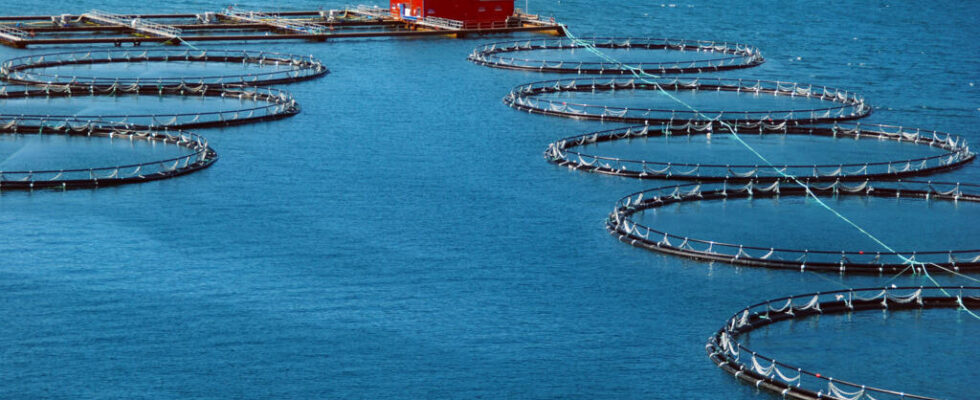Eat farmed salmon? No more than once a year according to the recommendations of the NGO WWF in Scandinavia and not for health reasons but for ecological and ethical reasons.
4 mins
Touted for its Omega 3 and its dietary virtues, salmon Norwegian does not show great form in the fish farms where it is raised. The latest report from the Norwegian Veterinary Institute denounces the conditions of salmon farming. He indicates that because of overpopulation in the ponds, a parasite proliferates: the salmon lice. The latter is responsible for the death of 63 million salmon, or one fish in six, but also a phenomenal quantity of other small fish, which are used, precisely, to delouse the salmonreports our correspondent in Stockholm, Carlotta Morteo.
To reduce the spreading of chemicals at sea in its fight against salmon lice, the Norwegian industry has since the 2000s increasingly resorted to a so-called natural method. She introduces rock fish, nicknamed cleaner fish, into the ponds. Problem: none of the 34 million fish torn from their reefs last year to scavenge salmon survived more than 18 months, while certain species could live up to 30 years in their natural environment.
In addition to the stress and unsuitability for this new habitat, the Norwegian Veterinary Institute indicates that rock fish are not enough to stop lice epidemics and that they most often find themselves sucked into mechanical delousing systems. the hot water from which they do not come out alive.
Injured or sick fish illegally exported
Salmon that die prematurely are usually processed into animal feed or biofuel. But, according to Norwegian media, it could be that fish that were sick at the time of slaughter, or even already dead, end up on plates, sometimes under the “superior” label. According to experts, its consumption does not pose a risk to human health. “ Common pathogens that cause illness in salmon are not transmissible to humans », assures Edgar Brun.
The Norwegian Food Safety Authority also noted irregularities in breeding during one out of two inspections last year: injured or malformed fish were illegally exported in particular.
For reasons of reputation, only the export of superior or ordinary quality salmon is authorized. Lower quality fish, which constitutes a growing part of the stock, can only be sold abroad after processing, cut into fillets for example.
Revelations that harm the qualitative image that the sector is trying to establish
The stakes are high. This massacre tarnishes the reputation of an industry whose exports amount to 10.6 billion euros. Salmon exports reported some 10 billion euros to Norway last year, the 1.2 million tonnes sold representing the equivalent of 16 million daily meals.
The Sjomatbedriftene organization, which represents small producers, aims to reduce mortality by half by 2030, and the giant Salmar has invested more than 40 million euros to work on the issue. Among the avenues mentioned, increased spacing of aquaculture farms and new technologies, in particular so-called closed installations where the water is filtered. This technology would help protect against sea lice, but it is more expensive.
After this damning report, the Norwegian food safety authority is asking the Norwegian government for rules to curb what is described as ” animal tragedy “.
The government, for its part, insists on the responsibility that breeders have to respect regulations. “ Not all producers have the same mortality rate, it is possible to reduce it », notes the Secretary of State at the Ministry of Fisheries, Even Tronstad Sagebakken. Two texts in preparation, one on animal welfare and the other on the exploitation of the seas, should, according to him, contribute to this. In the meantime, the Food Safety Authority says it is still receiving reports that substandard salmon continues to leave the country.
Also listenEnvironment: should we stop eating chicken and salmon to preserve the planet?
